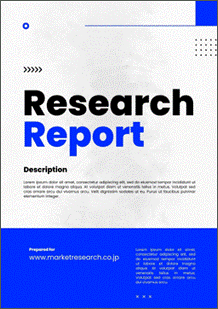 | • レポートコード:B-MOR-08232 • 出版社/出版日:Mordor Intelligence / 2018年5月1日 • レポート形態:英文、PDF、112ページ • 納品方法:Eメール(受注後2営業日) • 産業分類:Healthcare |
| Single User(1名様用) | ¥629,000 (USD4,250) | ▷ お問い合わせ |
| Team User(7名様用) | ¥666,000 (USD4,500) | ▷ お問い合わせ |
| Corporate User | ¥1,295,000 (USD8,750) | ▷ お問い合わせ |
• お支払方法:銀行振込(納品後、ご請求書送付)
レポート概要
| 本資料は、ハイコンテントスクリーニングの世界市場について調べ、ハイコンテントスクリーニングの世界規模、市場動向、市場環境、製品別(アッセイ、試薬、計測器、消耗品、ソフトウェア、サービス、その他)分析、用途別(探査スクリーニング、腫瘍学、毒物学、標的評価、神経生物学、その他)分析、エンドユーザー別分析、アメリカ市場規模、ヨーロッパ市場規模、アジア市場規模、日本市場規模、中国市場規模、企業の競争環境、関連企業情報などをまとめた調査レポートです。 ・イントロダクション ・エグゼクティブサマリー ・ハイコンテントスクリーニングの世界市場インサイト ・ハイコンテントスクリーニングの世界市場環境 ・ハイコンテントスクリーニングの世界市場動向 ・ハイコンテントスクリーニングの世界市場規模 ・ハイコンテントスクリーニングの世界市場規模:製品別(アッセイ、試薬、計測器、消耗品、ソフトウェア、サービス、その他) ・ハイコンテントスクリーニングの世界市場規模:用途別(探査スクリーニング、腫瘍学、毒物学、標的評価、神経生物学、その他) ・ハイコンテントスクリーニングの世界市場規模:エンドユーザー別 ・ハイコンテントスクリーニングの世界市場:地域別市場規模・分析 ・ハイコンテントスクリーニングの北米市場規模・予測 ・ハイコンテントスクリーニングのアメリカ市場規模・予測 ・ハイコンテントスクリーニングのヨーロッパ市場規模・予測 ・ハイコンテントスクリーニングのアジア市場規模・予測 ・ハイコンテントスクリーニングの日本市場規模・予測 ・ハイコンテントスクリーニングの中国市場規模・予測 ・ハイコンテントスクリーニングのインド市場規模・予測 ・ハイコンテントスクリーニングの韓国市場規模・予測 ・関連企業情報・競争状況 |
The high content screening market is expected to register a CAGR of around 10%, during the forecast period, 2018 to 2023. High-content analysis (HCA) or high-content screening (HCS) defines a set of programmed diagnostic methods using integrated microscopy, image processing, and visualization gears to mine data from cells or cell populations and report quantitative results. Over the past five years, a majority of HTS laboratories have adopted high-content screening (HCS) in their operations. As HTS laboratories have sought more biologically-relevant assays, cell-based assays, and high content screening technologies have become more widespread.
Technological Advancements in High Content Screening Technologies
A variety of assay technologies continue to be developed for high-content screening. These include cell-based assays, surrogate systems using microbial cells, such as yeast and bacterial two-hybrid and three-hybrid systems, and systems to measure nucleic acid-protein and receptor-ligand interactions. Modifications have been developed for cell-free, homogeneous assay systems, such as time-resolved fluorescence, fluorescence polarization, and the scintillation proximity assay. Innovations in engineering and chemistry have led to delivery systems for nanoliter volumes and sensitive biosensors for ultra-high-content screening conducted in nanoliter and picoliter volumes. Spectroscopic methods have been extended to read single-molecule fluorescence. Technologies are being developed to identify new targets from genomic information to design the next generation of screens. These advances will help drive the market in the future. Other factors, such as increase in the government funding and private investments and increase in emphasis on diagnosis will boost the market growth in the future.
High Costs of Initial Investment
In case of High Content Screening, the capital required to setup up the equipment for high content screening is very expensive as there is a lot of high-end biotechnology is involved. Also, the cost of labor is very high a sit requires very skilled labor, which is very expensive as the operations involved are complex and high-end laboratory professionals are often highly paid. Along with this, the lack of properly trained professionals may act as a restraining factor for the growth of high content screening market.
North America to Dominate the Market
In 2017, North America is expected to account for the largest share of the market followed by Europe. This regional segment is expected to register the highest CAGR during the forecast period. In APAC and European regions, the market is going to grow because of the increasing awareness about the efficiency of high content screening. These regions will witness considerable growth in the forecast period.
Key Developments in the Market
• March 2017 – Becton Dickinson, Bio-Rad Laboratories, Cell Signalling Technologies, Danaher Corporation, GE Healthcare, Genedata AG, Merck Millipore, and Perkin Elmer, among others
Major players – BECTON DICKINSON, BIO-RAD LABORATORIES, CELL SIGNALLING TECHNOLOGIES, DANAHER CORPORATION, GE HEALTHCARE, GENEDATA AG, MERCK MILLIPORE, PERKIN ELMER, THERMO FISHER SCIENTIFIC, AND YOKOGAWA ELECTRIC CORPORATION, amongst others.
Reasons to Purchase this Report
• Current and future High Content Screening Market outlook in the developed and emerging markets
• Analysis of various perspectives of the market with the help of Porter’s five forces analysis
• The segment that is expected to dominate the market
• Regions that are expected to witness the fastest growth during the forecast period
• Identify the latest developments, market shares, and strategies employed by the major market players
• 3 months analyst support, along with the Market Estimate sheet (in Excel)
Customization of the Report
• This report can be customized to meet your requirements. Please connect with our representative, who will ensure you to get a report that suits your needs.
レポート目次1. Introduction
1.1 Market Definition
2. Research Methodology
3. Executive Summary
4. Key Inferences
5. Market Overview
5.1 Current Market Scenario
5.2 Porter’s Five Forces Analysis
5.2.1 Bargaining Power of Suppliers
5.2.2 Bargaining Power of Consumers
5.2.3 Threat of New Entrants
5.2.4 Threat of Substitute Product and Services
5.2.5 Competitive Rivalry within the Industry
6. Drivers, Restraints, Opportunities, and Challenges Analysis (DROC)
6.1 Market Drivers
6.1.1 Rapid Technological Advances in High Content Screening solutions
6.1.2 Increase in the Government Funding and Private Investments
6.1.3 Increase in Emphasis on Diagnosis
6.2 Market Restraints
6.2.1 High Costs of HCS instruments
6.2.2 Lack of Proper Skilled Labor for the operation of HCS instruments
6.3 Opportunities
6.4 Key Challenges
7. Market Segmentation
7.1 By Product
7.1.1 Assays
7.1.2 Reagents
7.1.3 Instruments
7.1.4 Consumables
7.1.5 Software
7.1.6 Services
7.1.7 Others
7.2 By Application
7.2.1 Explorative Screening
7.2.2 Oncology
7.2.3 Toxicology
7.2.4 Target Validation
7.2.5 Neurobiology
7.2.6 Others
7.3 By End-user
7.3.1 Pharmaceuticals
7.3.2 Biotechnology
7.3.3 Others
7.4 By Geography
7.4.1 North America
7.4.1.1 United States
7.4.1.2 Canada
7.4.1.3 Mexico
7.4.2 Europe
7.4.2.1 France
7.4.2.2 Germany
7.4.2.3 United Kingdom
7.4.2.4 Italy
7.4.2.5 Spain
7.4.2.6 Rest of Europe
7.4.3 Asia-Pacific
7.4.3.1 China
7.4.3.2 Japan
7.4.3.3 India
7.4.3.4 Australia & New Zealand
7.4.3.5 South Korea
7.4.3.6 Rest of Asia-Pacific
7.4.4 Middle East & Africa
7.4.4.1 GCC
7.4.4.2 South Africa
7.4.4.3 Rest of the Middle East & Africa
7.4.5 South America
7.4.5.1 Brazil
7.4.5.2 Argentina
7.4.5.3 Rest of South America
8. Competitive Landscape
8.1 Mergers & Acquisition Analysis
8.2 Agreements, Collaborations, and Partnerships
8.3 New Products Launches
9. Key Players
9.1 Becton Dickinson
9.2 Bio-Rad Laboratories
9.3 Cell Signalling Technologies
9.4 Danaher Corporation
9.5 GE Healthcare
9.6 Genedata AG
9.7 Merck Millipore
9.8 Perkin Elmer
9.9 Thermo Fisher Scientific
9.10 Yokogawa Electric Corporation
9.11 List Not Exhaustive
10. Future of the Market